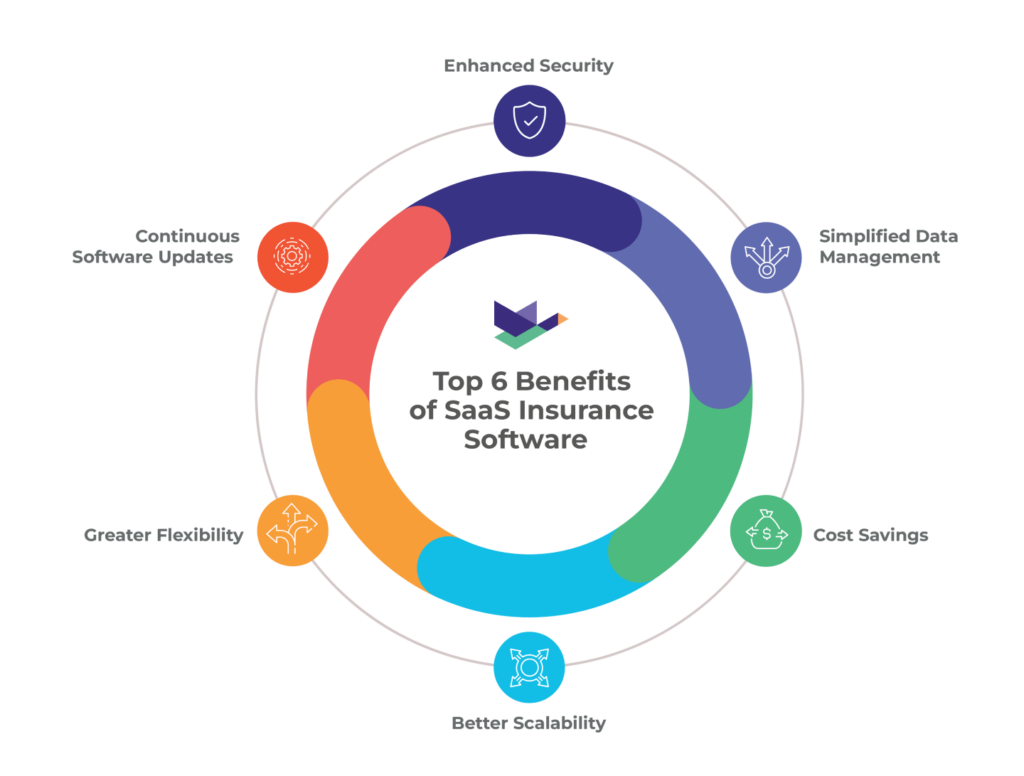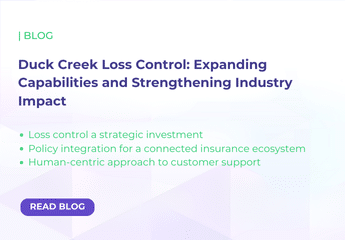Like many other industries, the insurance sector has seen a big shift towards SaaS solutions in recent years, graduating from on-premise to core systems as cloud technology matured. While the global insurance SaaS market was valued at $81.7 billion in 2023, this value is forecasted to reach $156 billion by 2028, at a CAGR of 13.8%. This growth is fueled by notable improvements in operational efficiency, significant cost savings and heightened data security and scalability for those providers who have already adopted a SaaS model.
But what exactly are SaaS insurance solutions, and how do they revolutionize the industry?
What is a SaaS Insurance Solution?
SaaS, or Software as a Service, in the insurance industry, is essentially a cloud-based software service specifically designed for the insurance sector.
It represents a mode of software delivery where applications are hosted remotely by a provider and made available to customers via an API. This approach differs significantly from traditional software installation, where individual users or companies need to host the software on their own computers or servers.
An insurance SaaS enables insurance companies to efficiently manage their operations, from policy administration and billing to claims management, as needed, usually in the form of downloadable commercial- or enterprise-grade software.
This model is particularly advantageous for its scalability, allowing businesses of any size to adjust their usage based on changing needs without requiring hefty upfront investments in IT infrastructure.
Why Use SaaS Insurance Solutions?
The technology platforms that insurers choose to operate on can significantly impact their ability to grow and meet the demands of contemporary customers. This is where a critical decision has to be made: to continue with the status quo or to pivot towards more agile and scalable technological solutions.
Simply put, SaaS platforms are much more flexible and scalable, helping businesses adapt to market and regulation changes quickly. Unlike legacy systems, SaaS updates easily, saving time and money.
The Risk of Staying with Legacy Systems
Sticking with legacy systems not only risks losing customers and market share but also exposes insurance companies to higher operational risks and inefficiencies.
1. End of Life Products
Over time, legacy systems also become legacy products for the company that built them and will have an end-of-life. From that point on, the product is no longer supported by the original builders, meaning costs of maintenance explode and access to skills that know how to manage those systems dissipate.
2. Security Vulnerabilities
Legacy systems are prone to security vulnerabilities, which can lead to data breaches and compliance issues. These systems also struggle to integrate with new digital tools and data analytics platforms, which are essential for making informed business decisions and improving service offerings.
3. Data Silos
Legacy systems often can’t integrate with newer technologies, leading to manual data handling or excluding data from modern analytics and predictive modeling processes. This prevents insurers from fully analyzing their data, which is critical for making informed decisions and improving operations. The result is a scattered data environment that limits the use of data analytics, putting insurance companies at a disadvantage in a market that relies heavily on data insights.
4. Increasing Maintenance Costs
Additionally, the cost of maintaining these outdated systems is continuously rising as the number of IT technicians still skilled in the maintenance of these systems decreases, diverting precious resources from innovation and growth opportunities. In fact, outdated systems can cost an organization almost a 15% annual budget increase just for their maintenance.
5. Lack of Scalability
Furthermore, legacy systems lack scalability, making it difficult for insurers to grow or adjust their capacity with market demands. This rigid structure limits their ability to expand services or enter new markets efficiently.
6. Manual, On-Premise Updates
Legacy systems require manual updates on-premises, a process that’s both time-consuming and resource-intensive. This method of version maintenance not only affects operational efficiency but also impacts an insurer’s ability to stay competitive and secure in a dynamic market environment.
7. On-Premise Limitations
Legacy, on-premise insurance systems greatly lack flexibility, effectively anchoring employees to specific physical locations due to the requirement of direct access to onsite servers and hardware. This could mean that employees are restricted from remote working abilities, which is a need post-Covid.
8. Competitive Disadvantages
Most notably, failing to adapt to SaaS solutions can significantly hinder a company’s ability to respond to new threats and opportunities, effectively putting an insurer at a strategic disadvantage.
How Does the SaaS Model Work in Insurance?
The SaaS model in insurance leverages cloud technology to provide a comprehensive suite of insurance functions as online services.
Insurers can subscribe to services on a pay-as-you-go basis, which not only offers them the flexibility to scale services according to demand but also significantly lowers the entry barrier for smaller or emerging companies.
For example, some insurers may be happy with their underwriting software, but needs a more robust data analytics software to support the underwriters as new products are being developed.
With SaaS, an insurer can opt-in to just the data analytics software from an insurance SaaS vendor, which could then integrate with the insurer’s existing systems for a seamless data management experience.
A new insurance company could also subscribe to an insurance SaaS bundle instead of developing its own core system, which could take much longer to develop, test, and train for any new staff.
Top 6 Benefits of SaaS Insurance Software
SaaS insurance software offers significant advantages, including quicker policy issuance and claims processing due to automation and instant access to data. It also provides stronger data security features to protect against cyber threats.
SaaS software may also improve the insurance experience for policyholders by allowing easy access to their services and information. Insurers gain from a system that supports a more customer-focused approach. Insurers may also benefit from:
1. Enhanced Security
On the security front, SaaS vendors are committed to safeguarding client data, implementing regular software updates, conducting backups, and adhering to industry-standard security measures to protect against potential cyber threats.
2. Simplified Data Management
Insurance SaaS streamlines data management by eliminating data silos common in legacy systems. This means that SaaS facilitates a smooth data exchange across various functions, creating an integrated data ecosystem. The compatibility of SaaS with new technologies ensures that all data is included in analytics, providing a complete operational view and supporting informed strategic planning.
3. Cost Savings
Choosing SaaS insurance software translates into significant cost advantages by eliminating the need for substantial upfront investments in hardware and software licenses, alongside the recurring expense of IT staff required for system maintenance. This cost-effectiveness is particularly beneficial for smaller insurance firms that may not have vast resources at their disposal.
4. Better Scalability
Furthermore, the scalability feature of SaaS solutions ensures that insurance companies can effortlessly adjust their operations to align with their growth without being constricted by their current IT infrastructure. This adaptability allows for a swift response to changing market demands.
5. Greater Flexibility
Lastly, the flexibility offered by SaaS enables insurance employees to access the system remotely from any device with an internet connection, fostering a versatile work environment and ensuring continuity in business operations.
6. Continuous Software Updates
A key benefit of SaaS insurance solutions over on-premise systems is the regular, automatic updates. This approach ensures insurers are always working with the latest version, integrating new features and security protocols without the hassle or cost of manual upgrades. It eliminates downtime and keeps companies ahead with cutting-edge technology, making manual, costly updates of legacy systems a thing of the past.

Future-Proof Your Insurance Business with Duck Creek
Digital transformation is crucial for the insurance industry, and SaaS solutions are key to this progress. Duck Creek offers SaaS insurance solutions that help insurance companies remain competitive by being more agile and responsive to the evolving market and consumer demands. Their services range from core insurance systems to specialized SaaS insurance options tailored to the insurance industry’s specific needs.
For those interested in how technology is reshaping insurance, Duck Creek provides cutting-edge solutions like Duck Creek OnDemand and offers expertise in areas such as workers’ compensation insurance. Partnering with Duck Creek allows insurance businesses to effectively address today’s challenges while preparing for future opportunities.




